
Culture
07:46, 12-May-2019
Job Challenge: Bringing history to life at the Palace Museum
By Li Ningning, Nick Moore
09:12
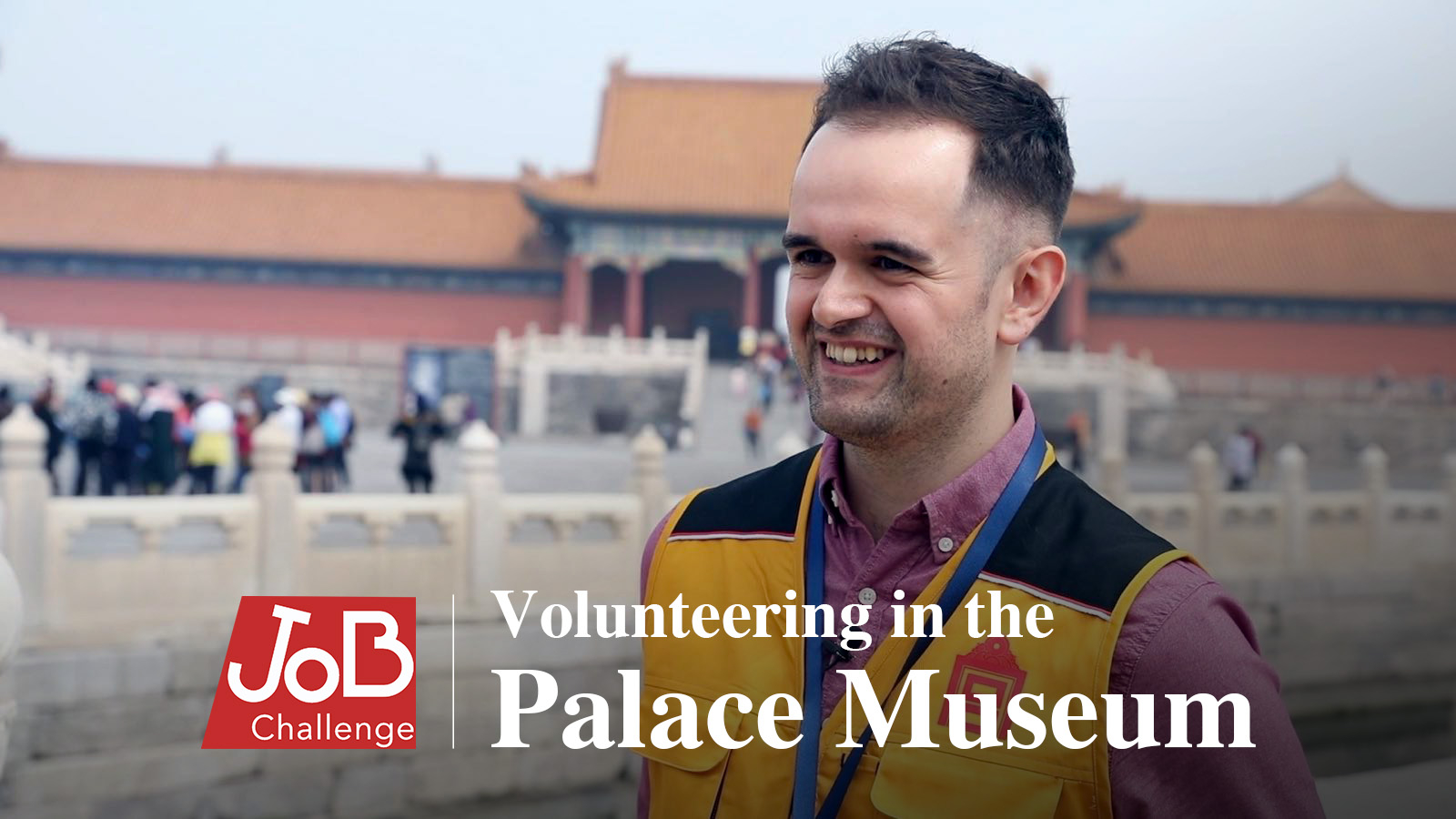
At the heart of Beijing sits the Palace Museum, a sprawling complex of palaces, historic halls and courtyard gardens which is on the verge of celebrating its 600th birthday.
Also known as the Forbidden City, the Palace Museum is an immense source of pride for people across the country, particularly in Beijing.
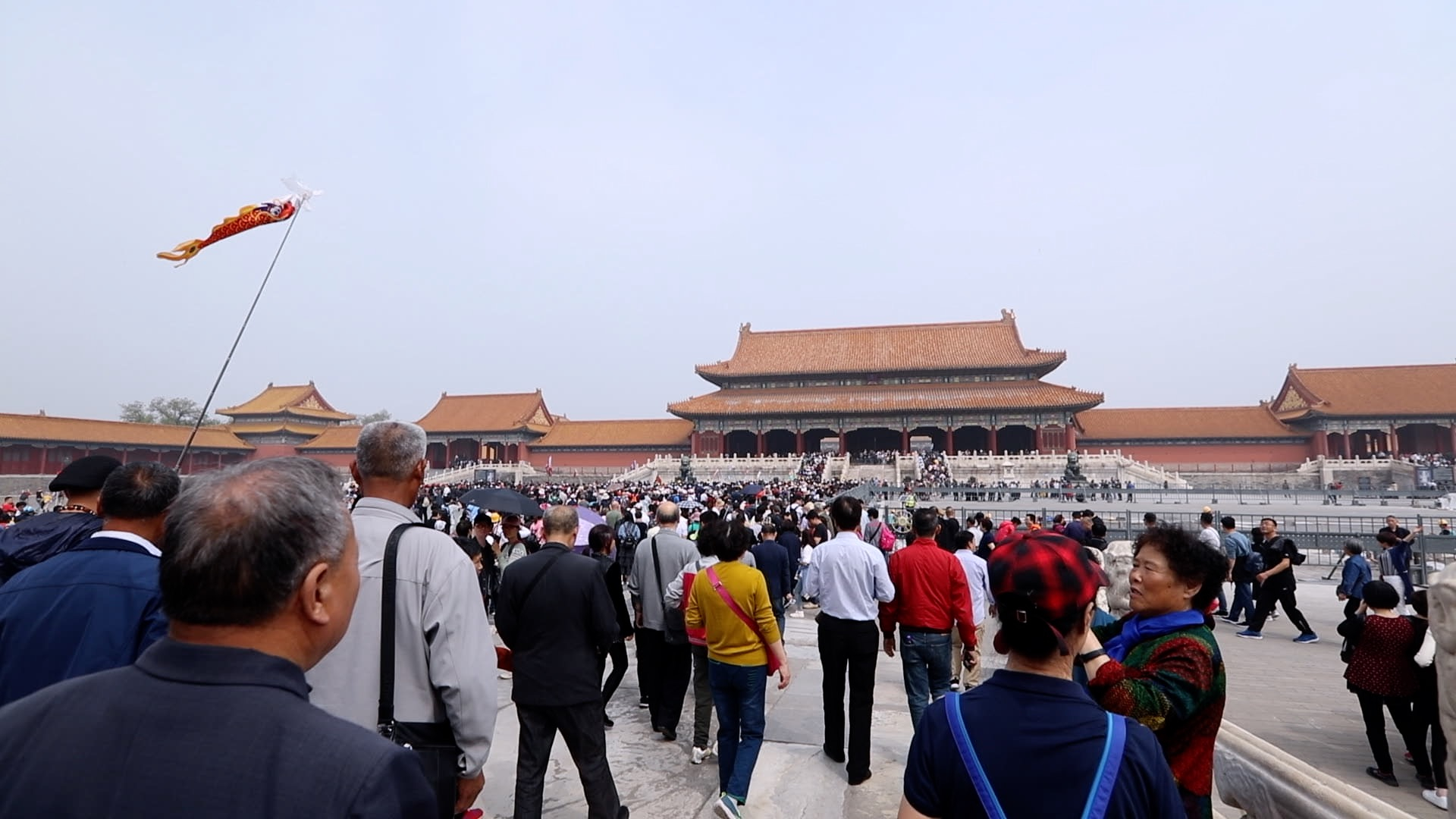
Tourists flock into the Palace Museum. /CGTN Photo
Tourists flock into the Palace Museum. /CGTN Photo
Its rich history and collection of treasures remind visitors of the country's past, while the 80,000 daily tourists armed with smartphones and selfie-sticks reflect modern China.
With all of this in mind, I could forgive myself for being slightly overwhelmed by my task – volunteering at the Palace Museum.
'The same size as 180 football pitches'
More than 600 people volunteer at the Forbidden City, fulfilling a number of roles to help the tens of thousands of daily tourists get the most from their visits.
I got to experience just two of the many roles the team of volunteers fulfills – first as a friendly face providing some general visitor information, and second as a tour guide specializing in Qing Dynasty furniture.
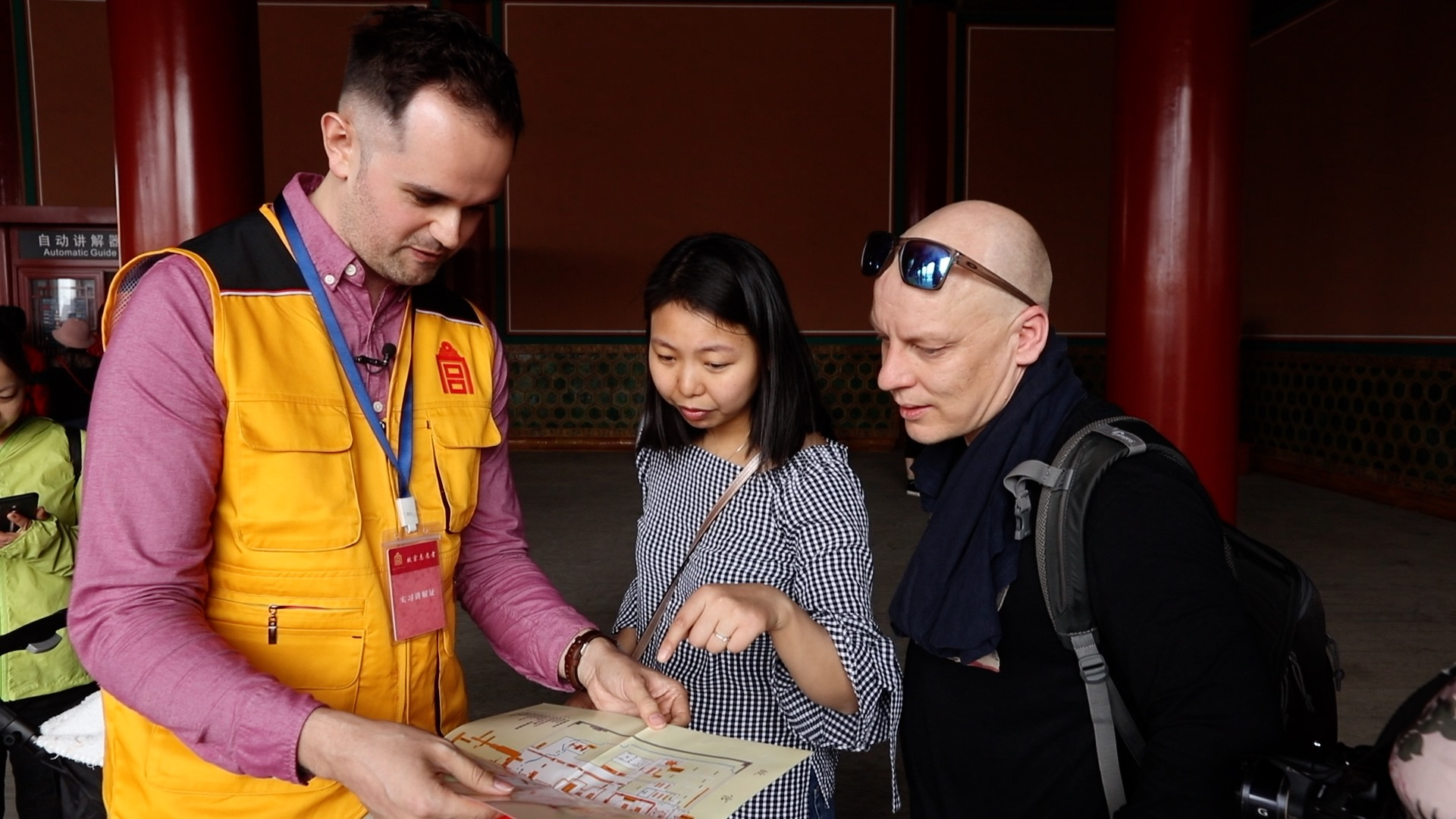
Providing advice to a group of tourists from Finland. /CGTN Photo
Providing advice to a group of tourists from Finland. /CGTN Photo
The Palace Museum has almost 1,000 buildings and covers the same area as 180 football pitches, but I was confident that I could learn the answers to the tourist FAQs. Where are the toilets? How do I get to the clock exhibition? What time does it close?
That second task, however, was an entirely different challenge. I'm interested in Chinese history, but a lifetime of studying wouldn't make me an expert on Qing Dynasty tables, wardrobes and chairs.
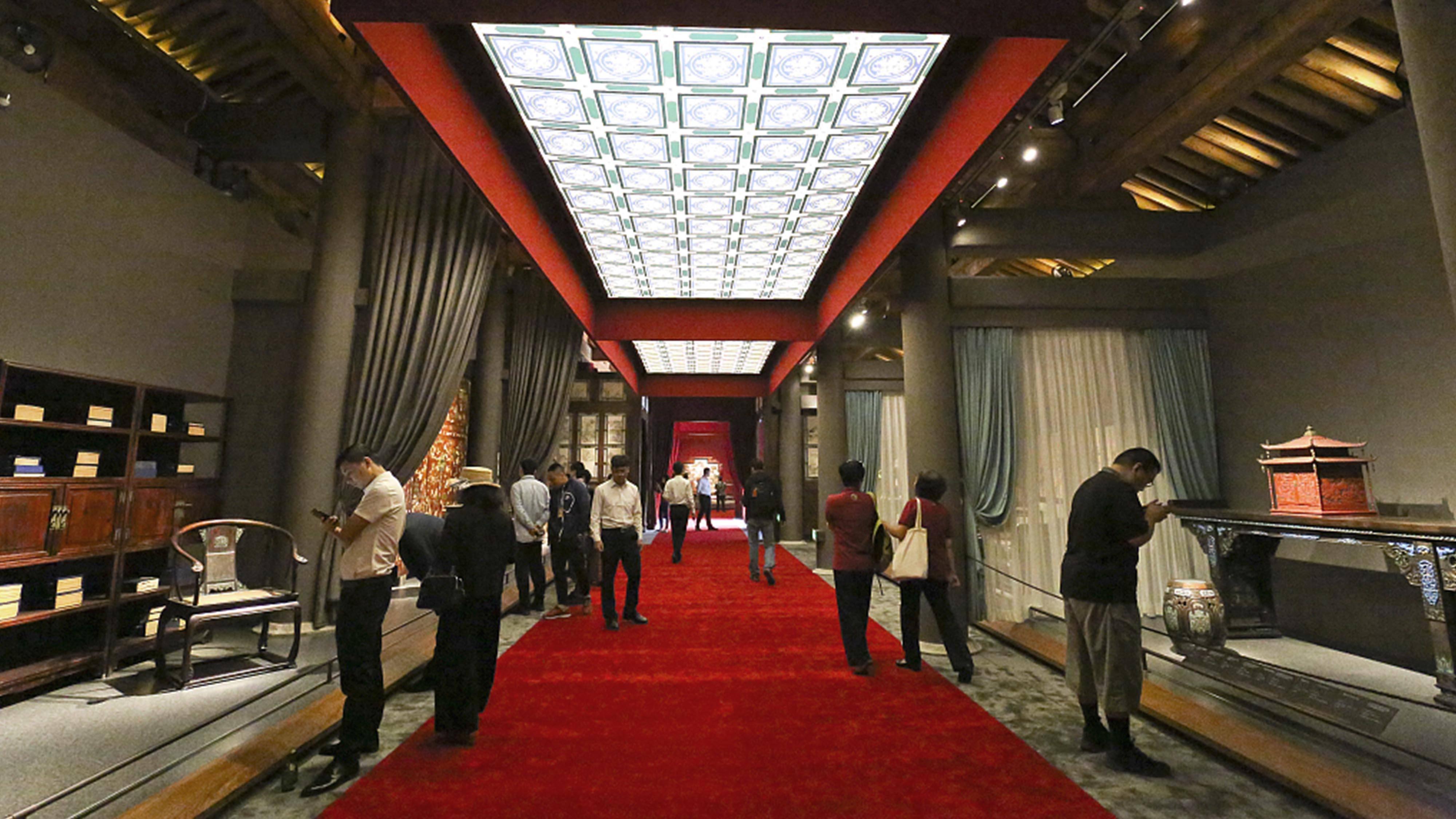
The Palace Museum's Furniture Gallery. /VCG Photo
The Palace Museum's Furniture Gallery. /VCG Photo
To raise the stakes further, I would be giving the tour in Mandarin, to Chinese tourists. Mission: improbable? More like mission: impossible.
Luckily I was paired with one of the museum's most experienced volunteers, Lu Yan. Without her knowledge of the intricacies and fascinating backstories behind each piece of furniture, I would have failed completely.
Tech transforming tourism
Day one saw me posted at the Gate of Supreme Harmony. Lying on the central axis of the Palace Museum, it's one of the busiest spots and best locations for tourists looking to take selfies, check maps and find out more information.
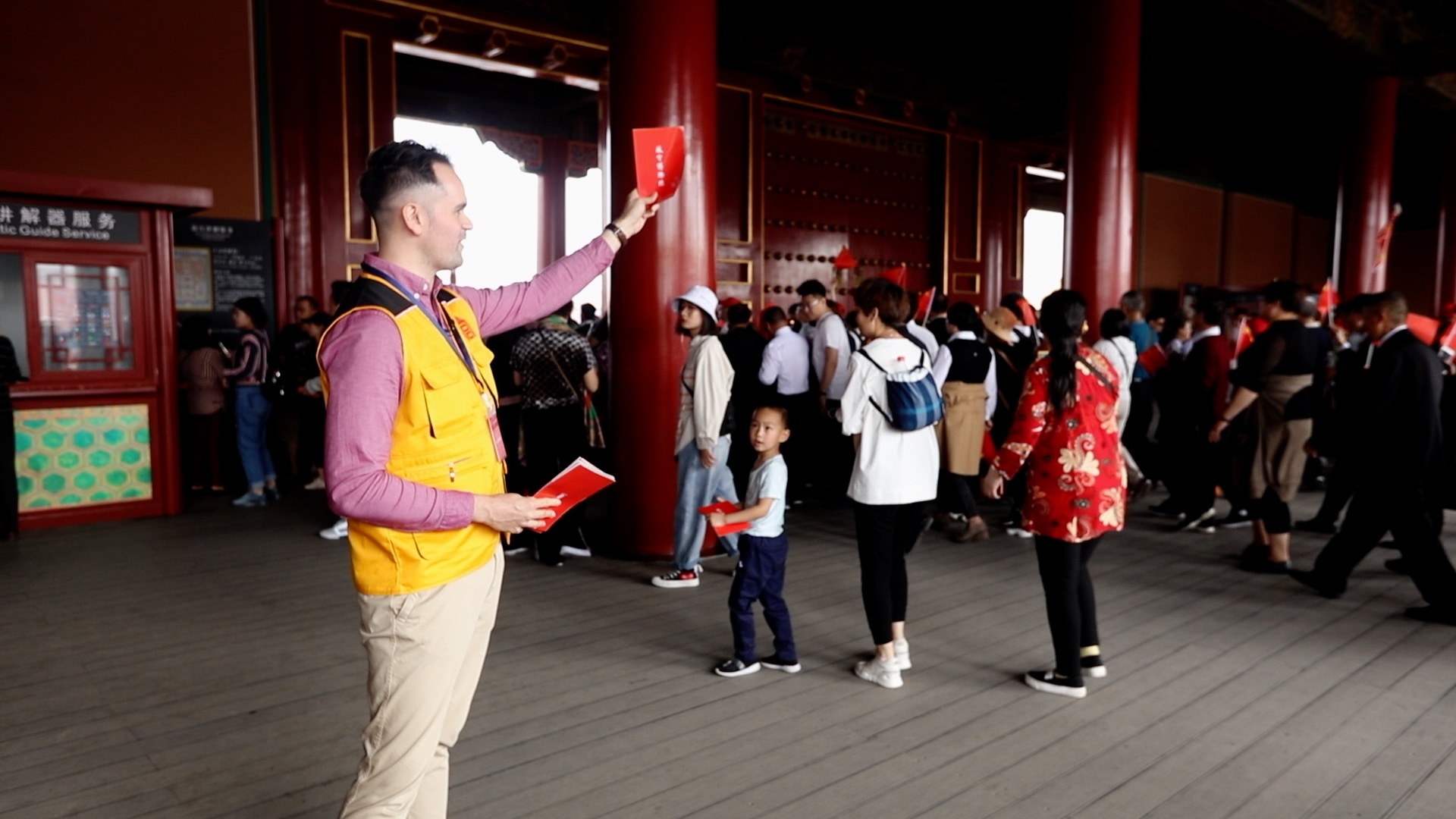
Giving out maps at the Gate of Supreme Harmony. /CGTN Photo
Giving out maps at the Gate of Supreme Harmony. /CGTN Photo
Helping out tourists was difficult. Not because of awkward questions or a language barrier – they simply didn't want or need my help.
I didn't take it too personally though – technology has transformed tourism in recent years, with smartphones putting encyclopedias, interactive maps and audio-guides into our hands within seconds.
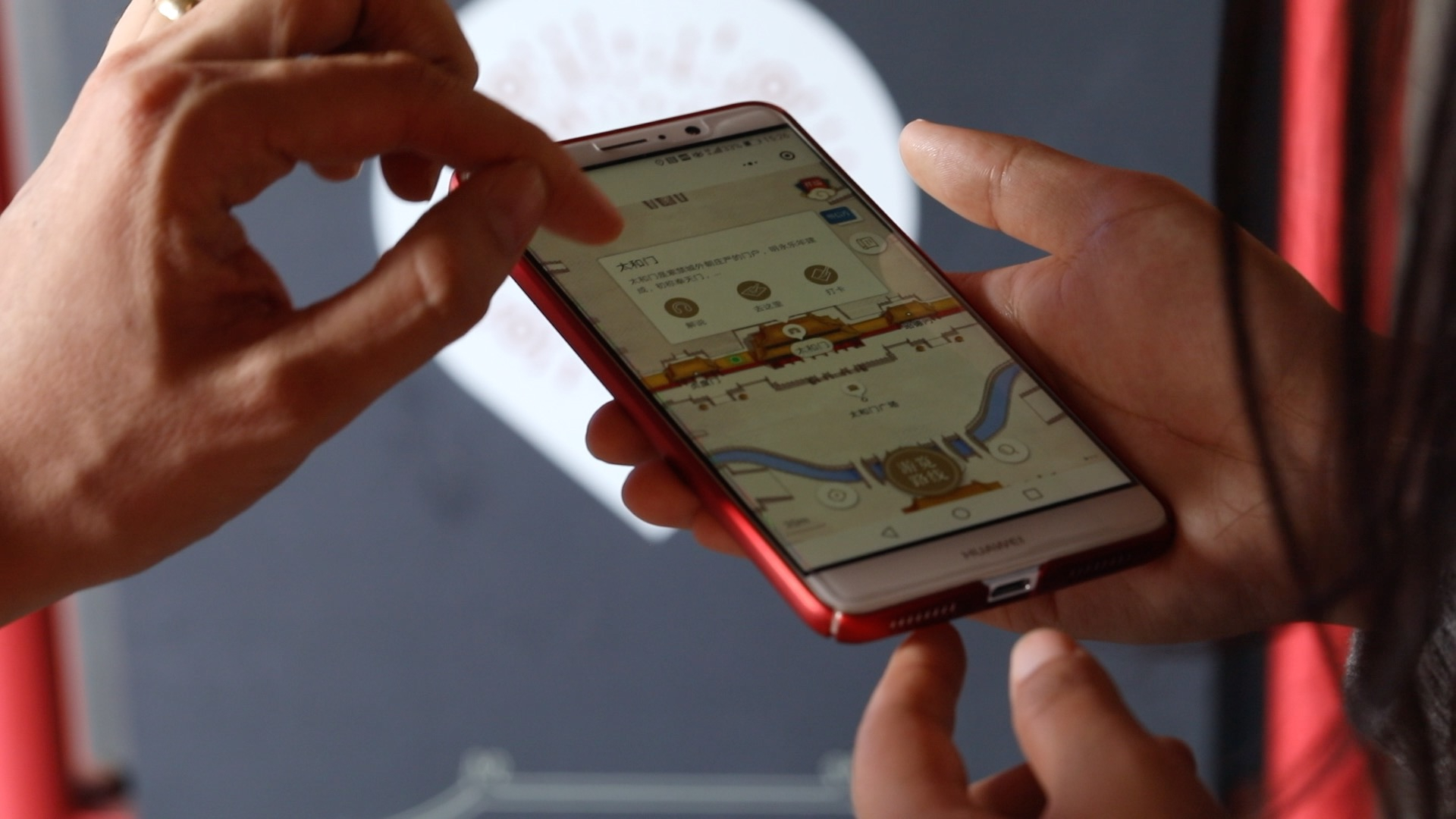
Tourists can use the museum's interactive map after scanning a QR code. /CGTN Photo
Tourists can use the museum's interactive map after scanning a QR code. /CGTN Photo
The Palace Museum itself embraces this technology, offering free WiFi coverage and encouraging visitors to scan QR codes and access its own interactive app.
Bringing history to life
Day two took me to the Palace Museum's Furniture Gallery, an exhibition featuring some of the finest fixtures of the Forbidden City.
While attractive to look at, without a volunteer on hand to provide information visitors would be completely unaware of the stories behind these pieces of furniture.
I first "met" these desks, chairs and wardrobes a week before my debut as a volunteer, and it soon became clear that each item was much more than precious wood, stone and lacquer.
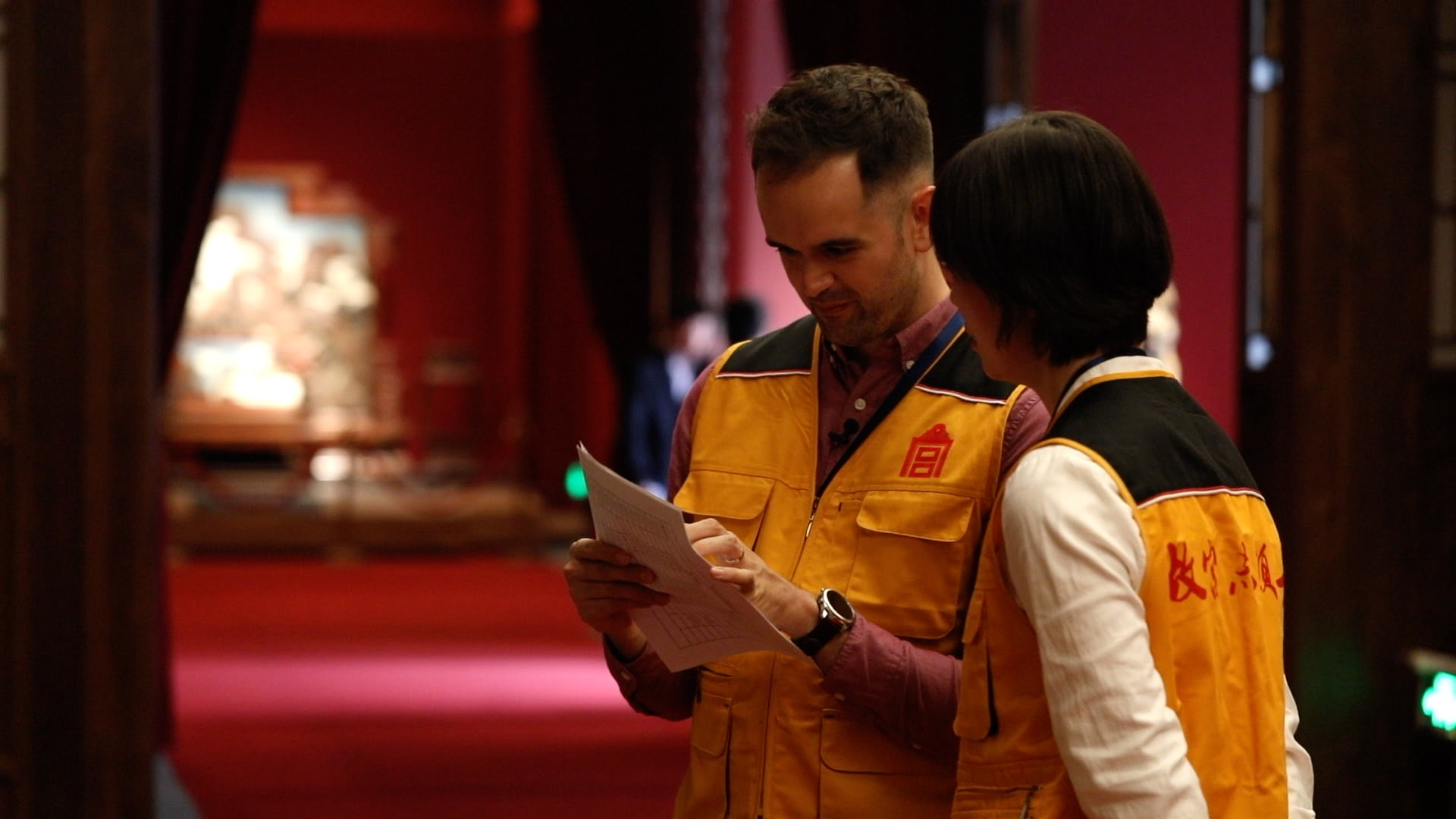
Lu Yan helped me learn about the furniture. /CGTN Photo
Lu Yan helped me learn about the furniture. /CGTN Photo
Lu overwhelmed me with details about their craftsmanship, the cultural connotations behind the carvings and engravings, and even some heartbreaking stories that could bring visitors closer to the people who lived, loved and suffered in the palace centuries ago.
My level of Chinese is not bad. But, it's still far from perfect, and the daunting task of remembering everything that Lu had taught me turned this task into a tough mental workout. I was struggling to remember the information in English, let alone Mandarin.
But thanks to Lu's help, I whisked my first group of tourists around the Furniture Gallery and was encouraged by their level of interest (and patience). Many visitors had some basic knowledge of Chinese furniture, some knew far more than I did. But all were willing to hear me out, despite more than a few slip ups.
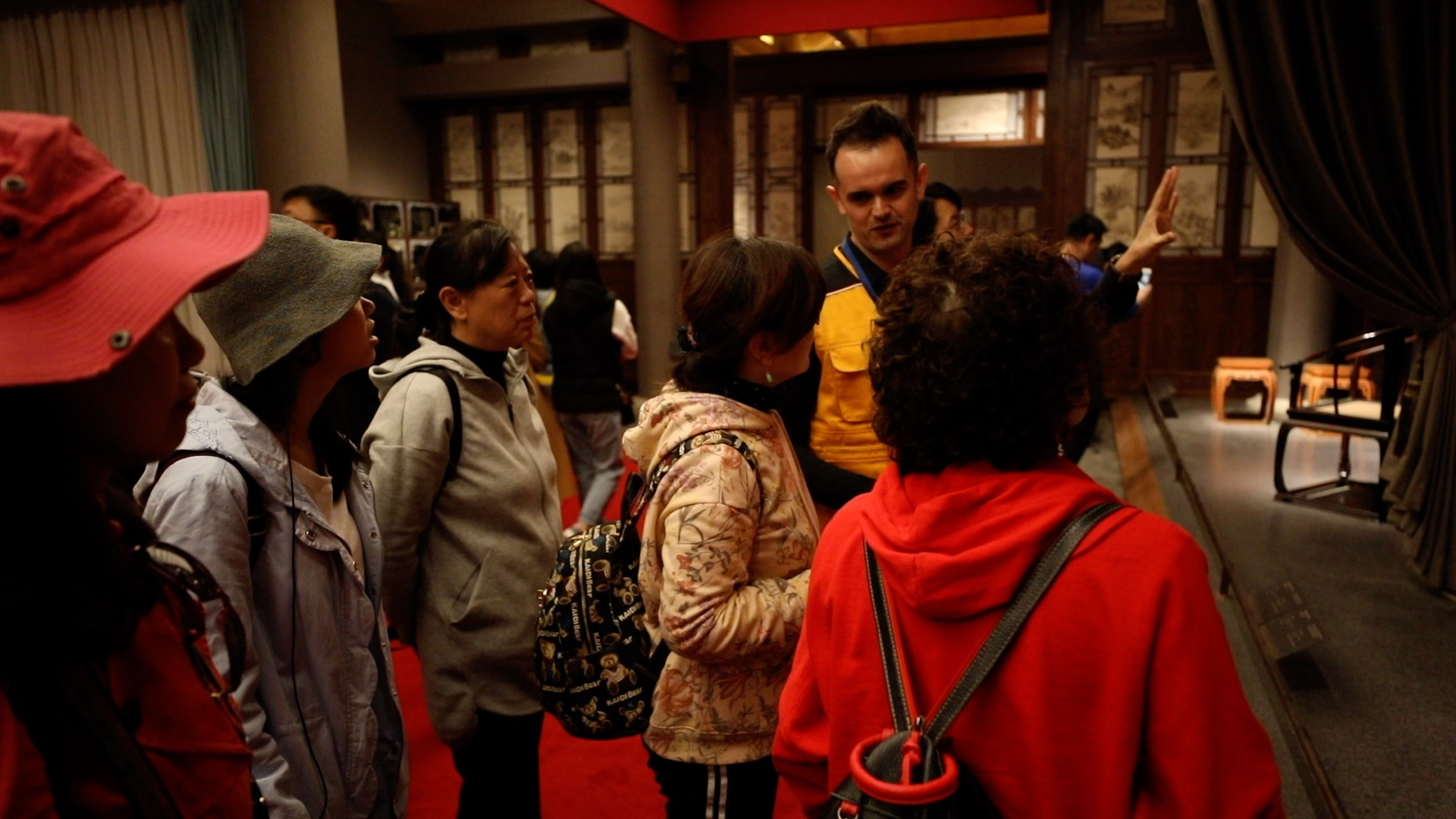
Working as a tour guide in the Furniture Gallery. /CGTN Photo
Working as a tour guide in the Furniture Gallery. /CGTN Photo
If you've ever tried to study Mandarin, your teacher would have said you must pay attention to your tones. For years I ignored my teacher, but this task underlined how important they are.
As I tried to introduce a wardrobe embedded with pictures of 蕃人 (fān rén, a historic Chinese term for people from western regions), I was met with bemused looks. 烦人? (fán rén, annoying?) 凡人? (fán rén, ordinary people?) 犯人?! (fàn rén, criminals?!)

The wardrobe embedded with pictures of 蕃人, or fān rén. /CGTN Photo
The wardrobe embedded with pictures of 蕃人, or fān rén. /CGTN Photo
But I was determined to do as good a job as possible, out of respect for the history, for Lu, and for the hundreds of other volunteers like her who dedicate their time to the Palace Museum.
Having spread just a little bit of knowledge, it felt good walking out of the historic gates of the Palace Museum that day, having learnt a lot of lessons myself.
Director: Li Ningning, Lu Chang
Filmed by: Yan Jingwei, Wang Yucheng, Fan Xin, Ding Chaoyi
Video editor: Li Ningning
Presenter: Nick Moore
Graphics and animation: Li Xiaojie, Wang Li
Article written by: Nick Moore
Project Manager: Chen Kairan
Producer: Wen Yaru
Chief Editor: Pei Jian
Supervisor: Pang Xinhua

SITEMAP
Copyright © 2018 CGTN. Beijing ICP prepared NO.16065310-3
Copyright © 2018 CGTN. Beijing ICP prepared NO.16065310-3